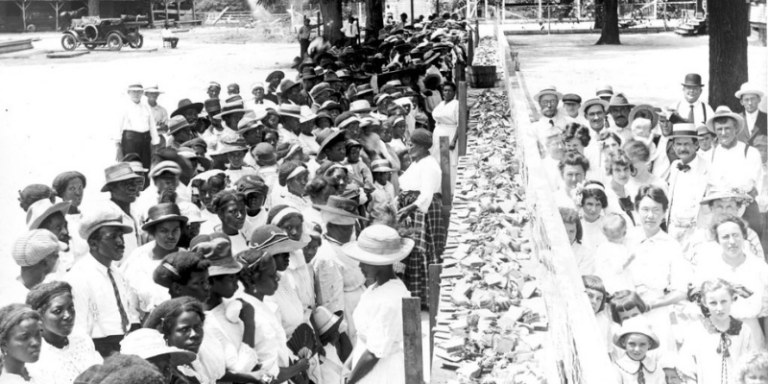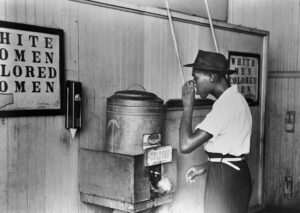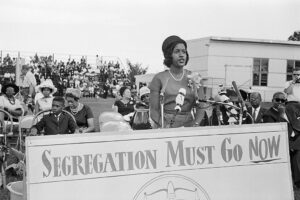Segregation: With or Without Slavery, There Was No Equality
Even after slavery ended, black people were kept out of white society.
By: Kelli Ballard | February 9, 2021 | 481 Words

View of crowds at an annual barbecue given on the plantation of FM Gay, Alabama, 1930s. The crowds are segregated. (Photo by Library of Congress/Interim Archives/Getty Images)
Segregation means keeping things or people apart. In United States history, it means the laws and customs that kept black people separate from white people. Black and white people had been seen as different and unequal since Europeans started bringing slaves from Africa to America in the early 1600s. By 1804, all the northern states in the U.S. had ended slavery, but there were slaves in the South up until the 13th Amendment to the Constitution, which abolished slavery everywhere in the U.S. after the Civil War. Segregation, however, lasted a lot longer.
After slavery ended in the U.S., the Black Codes, and then the Jim Crow laws, kept segregation going. These were laws that dictated how black people could live and work. They kept black people out of white schools, theaters, parks, pools, and neighborhoods. There were even separate cemeteries and jails for black people.

(Getty Images)
In 1875, Republicans tried to end racial segregation with a civil rights bill that made it illegal to discriminate in schools, public transportation, and churches. The bill was passed, but the law was not really enforced, and the Supreme Court overturned it in 1883.
In 1896, the Supreme Court still ruled that segregation was constitutional and that it applied even to those who were only part black in the Plessy v. Ferguson case, ruling that a mixed-race man had to sit in the black-designated train car.
Neighborhoods and Housing
Even in the North, some cities had zoning laws that prohibited black families from moving into white neighborhoods. Although the Supreme Court ruled those laws were unconstitutional, Secretary of Commerce Herbert Hoover found a loophole letting him create a federal zoning committee that pressured local boards to pass rules preventing lower-income families from moving into middle-income areas. At the time, that almost always meant black families weren’t allowed to live in white neighborhoods.

(Getty Images)
Segregation in Schools
In 1954, the Supreme Court ruled in the case of Brown v. Board of Education that segregation was unconstitutional. Still, black children were being harassed. It got so bad that in 1957, President Dwight D. Eisenhower deployed federal troops in Little Rock, Arkansas to make sure nine black students could enter the high school safely.
The Civil Rights Movement
The fight for equality included many incidents over the years, but one of the most famous was in 1955. Rosa Parks, a black woman in Montgomery, Alabama, refused to give up her seat on a bus to a white man. She was arrested. This inspired Dr. Martin Luther King, Jr. to organize and lead the bus protest in December that year, which kicked off the Civil Rights Movement in earnest. The Civil Rights Act was signed in 1964. It officially outlawed discrimination, but it was a long and slow process to undo centuries of beliefs and segregation.
















